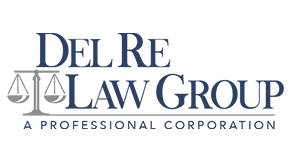A 23-year-old Illinois firefighter has filed a lawsuit stemming from injuries he says he sustained from an emergency call. Most Americans would find nothing unusual about this, other than concern for the young man’s health.
But some firefighters, police, paramedics and others in dangerous emergency professions might be surprised to hear about the suit, due to something often called the “firefighter’s rule.” They and their families should know that first responders do have rights and options under Illinois law.
An ammonia spill near the Wisconsin border
In April, on a highway just north of Waukegan, a farm truck pulling up to 2,000 gallons of anhydrous ammonia released most of its load of the colorless gas. Anhydrous ammonia can cause eye and throat irritation, fluid in the lungs, burns, and sometimes death.
The preliminary report from the National Transportation Safety Board has been widely seen as suggesting the driving improperly prepared the cargo for the road.
The Fireman’s Rule
The rule was previously known as the Fireman’s Rule, is now often called the Firefighter’s Rule, and has begun to be referred to as the Professional Rescuers Rule. At its core, it limits the ability of professional rescuers to recover damages sustained in the course of their duties.
The basic idea is that professional rescuers voluntarily and knowingly subject themselves to hazards to do their jobs and make their contributions to society. It isn’t simply that “you knew the job was dangerous when you took it.” It’s also that a fire simply isn’t a safe and healthy workplace, and society must rely on brave and selfless people to fight them.
Besides, if calling 911 made it likely you’d be sued by the emergency personnel who show up, our neighborhoods would quickly become extremely dangerous.
The rule has changed with the times
Decisions establishing this legal doctrine go back at least 100 years. But times have changed for this controversial doctrine (along with its name). There are now a variety of exceptions around the U.S. and the doctrine keeps evolving as courts reinterpret it.
One common exception, for example, is that an injured fireman may be able to hold a landowner liable, not for causing the fire but for injuries they didn’t need to sustain while fighting this fire. They were injured because of a faulty flight of stairs or other building code violation that didn’t cause the fire itself.
Another exception relates to a failure of the landowners to warn first responders of dangers hidden on the property, such as explosives.
In the case of the northern Illinois ammonia leak, it’s interesting (though not necessarily legally relevant) that initial 911 calls reported a car fire instead of a chemical leak, resulting in some first responders only donning chemical protection after they started suffering from its effects.
